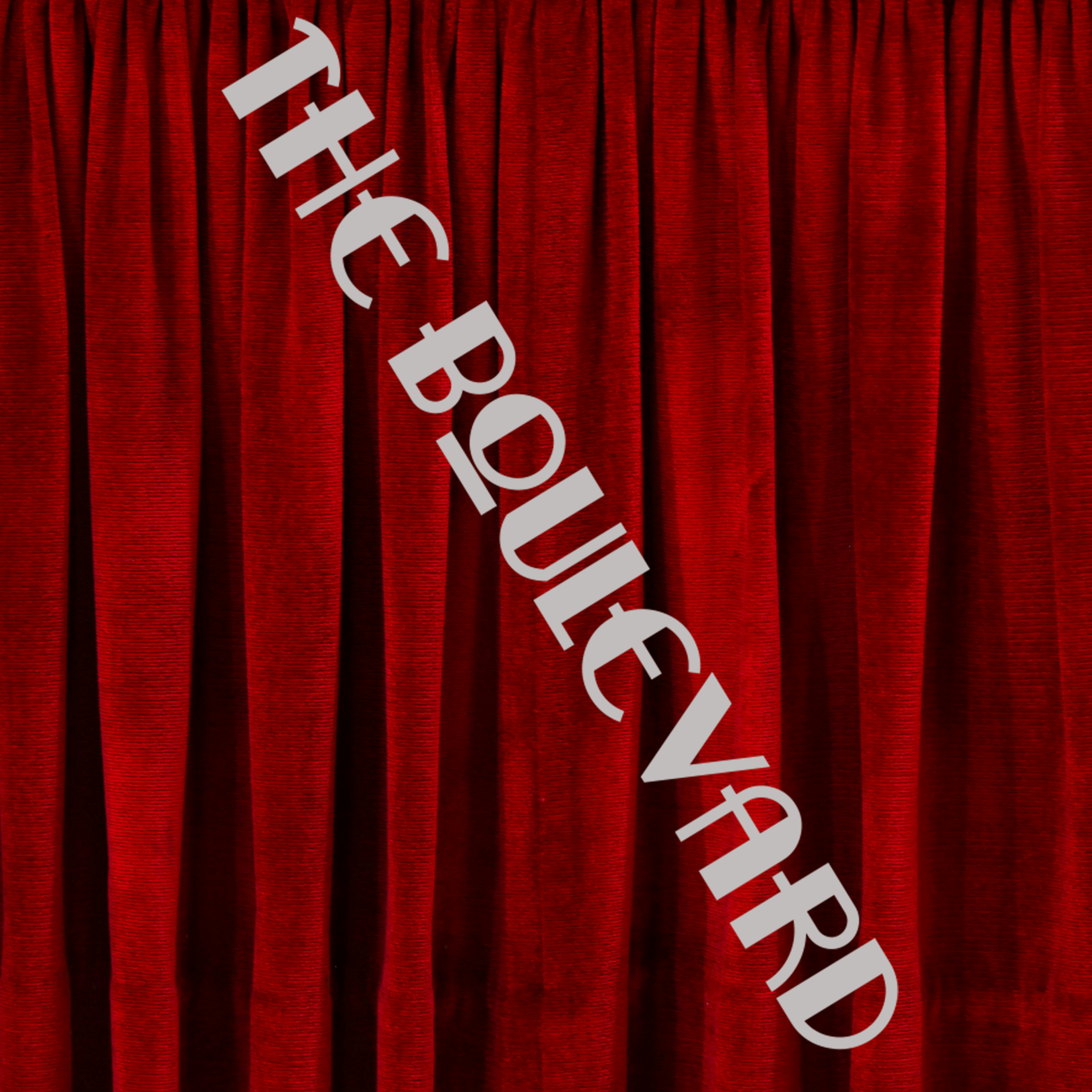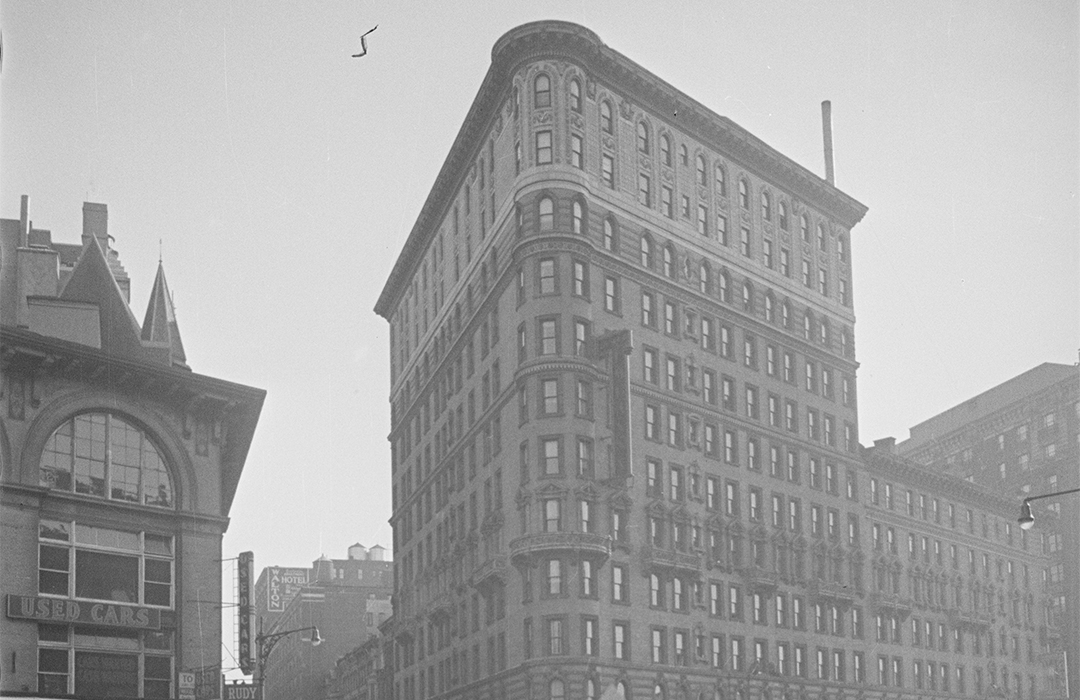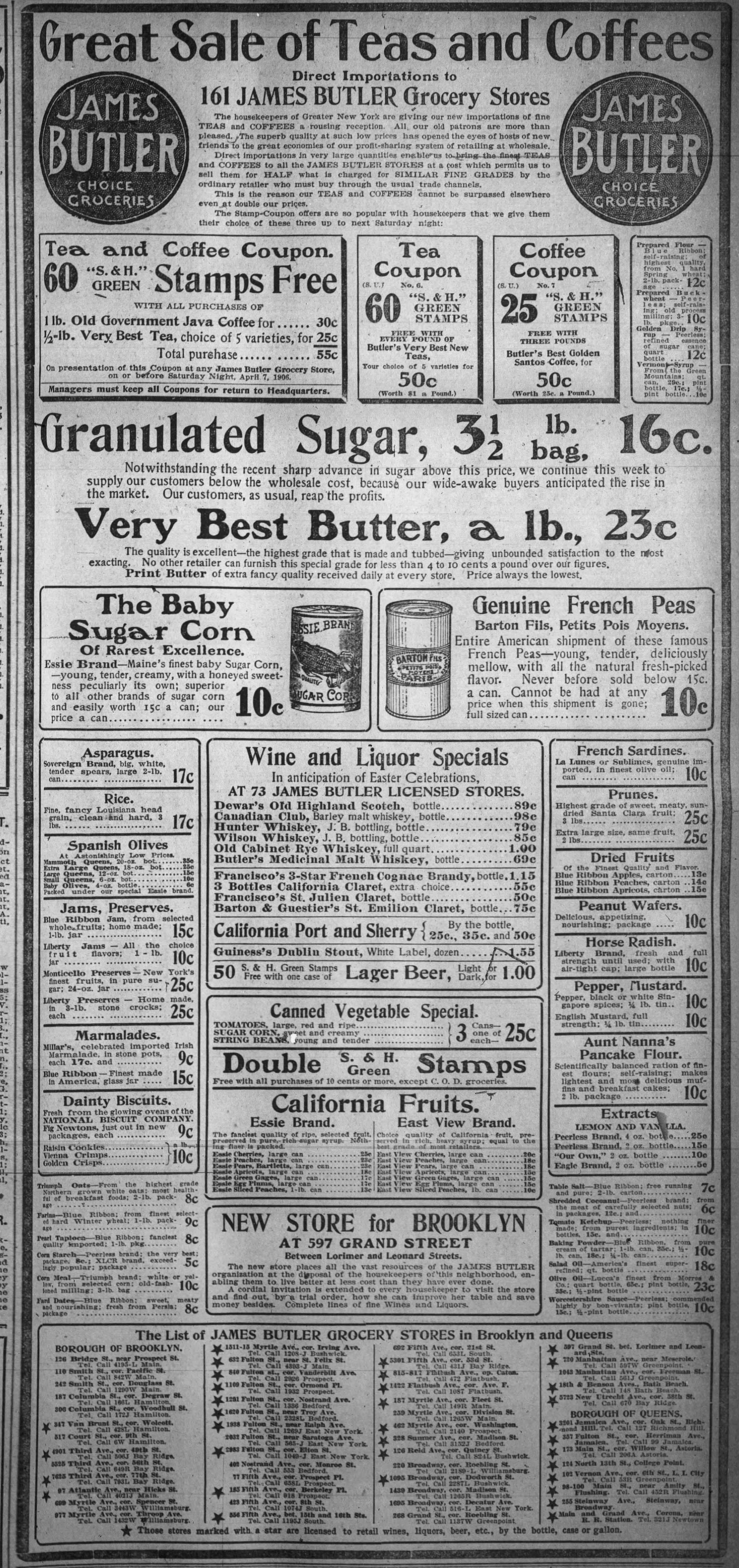
2020-2026 Broadway, The Seminole
by Tom Miller
Herbert Spencer Steinhardt changed his surname in the early 1890s to Styne-Harde. Not long afterward, in 1895, he and Joseph E. Ware designed an apartment and store building for developer Charles Lowen at 202 the Boulevard (sometimes called the Western Boulevard), on the northeast corner of 69th Street. Named The Seminole, it was completed the following year.
Ware & Styne-Harde faced the structure in beige Roman brick trimmed in stone and terra cotta above a stone base. The Renaissance Revival design featured egg-and-dart terra cotta bands at the second and seventh floors. The four-story mid-section was decorated with elaborate stone balconies and Renaissance-inspired openings with engaged columns and triangular pediments. The imposing entrance featured polished granite columns with Scamozzi capitals, and a highly carved entablature atop which were two seated, snarling lions.
An advertisement boasted that the apartments of eight or nine rooms included a “bath and butler’s pantry, gas range, electric lights, elevator, tiled baths, parquet floors and open plumbing” and that they were “modern in arrangement and construction and attractive location.”
The well-heeled residents of The Seminole appeared regularly in the society columns. On February 16, 1897, for instance, the New-York Tribune remarked, “Mrs. Charles A. Hogan will give a luncheon on February 25 at the Seminole, the Boulevard and Sixty-ninth-st.” And two months later, the newspaper reported, “Edward Everett Hale was the guest of honor at a large reception given Tuesday night by Mr. and Mrs. Bloom, of No. 202 Western Boulevard. Dr. Hale is spending a few days in New-York, on his way home from North Carolina. Among those present to meet him were Professor and Mrs. Burgiss, Dr. and Mrs. Gill Wylie, the Rev. Robert Collyer, the Rev.- Minot J. Savage and Mrs. Dunlap Hopkins.”
“At fifty-sixth street the horses swerved and dashed into an iron electric light pole, wrecking the brougham.”
Among the early residents was Julia Livingston. Born in 1840, she came from “a remarkable ancestry,” according to The New York Times. Livingston Manor was named after her family, which was one of New York’s oldest and most distinguished. She was a descendant of Morgan Lewis, a signer of the Declaration of Independence, who was elected Governor of the State of New York in 1804. Julia Livingston would remain at The Seminole until her death at the age of 80 on March 17, 1920. She never married.
Another wealthy family was that of banker Albert H. Scholle. On November 22, 1898, Scholle’s wife and ten-year-old daughter left on a shopping trip. Their afternoon in the Sixth Avenue emporiums would not come to pass. The New York Journal and Advertiser reported, “At Sixtieth street an unattached horse ran into the team attached to Mrs. Scholle’s brougham and frightened them.” The Scholle’s carriage driver, John Johnson, was unable to control the team and was thrown to the pavement. Mrs. Scholle and her daughter rode on in terror as their carriage bolted south through Columbus Circle. “At fifty-sixth street the horses swerved and dashed into an iron electric light pole, wrecking the brougham.”
All three of the occupants were seriously hurt. John Johnson was taken unconscious to Roosevelt Hospital, and the New York Journal and Advertiser said, “Mrs. Scholle sustained a severe scalp wound and an injury to the right temple. Her little daughter received a scalp wound on the right side of the head.”
In 1899, James Butler purchased The Seminole and began construction of The Ormond next door. He instructed his architect, Robert Maynicke, to closely match Ware & Styne-Harde’s design. With identical balconies and other ornamentation, it appeared to be an extension of The Seminole. The founder of the first American chain of grocery stores, (James Butler Choice Groceries) Butler and his wife, the former Mary A. Rorke, moved into a suite in The Seminole. Their summer estate, Eastview Farm, was near Tarrytown, New York. Following Mary’s death in 1906, the millionaire philanthropist remained in the apartment.
By 1905 Charles Champness Harrison and his wife, the former Gertrude Freytag Van Vleck, occupied a suite here. The couple was married in 1875 and had two grown daughters. Gertrude was the corresponding secretary of the Mary Arden Shakespeare Club. In 1910, she turned her focus to the humane treatment of horses. In March, she and five other concerned citizens incorporated the Horse Aid Society. The New-York Tribune reported that its objective was “the better treatment of sick, sore and disabled horses and the education of drivers and horse owners in the more humane treatment of their animals.”
Perhaps the first resident involved in the entertainment industry was playwright, agent, and writer Roi Cooper Megrue, who shared an apartment with his uncle, Harry H. Cooper, and mother, Stella Georgiana Cooper Megrue. Born in 1882, Megrue never married. Variety said his, “affectionate relationship with his mother was epic,” and that they shared “an artistically furnished apartment.”
Among Megrue’s plays were It Pays to Advertise and Under Cover, both staged in 1914; the 1916 Under Sentence; and Tea for Three, produced in 1918. The following year, his play Among the Girls opened in New Haven. Megrue’s uncle traveled there to see the premier, but he would never make the trip back to The Seminole. Harry H. Cooper died in New Haven of a stroke on May 13, 1919, at the age of 66.
The second half of the 20th century was not kind to The Seminole.
The family of Dr. Charles Deady moved into The Seminole in 1912. He was one of at least two physicians in the building. Dr. John Joseph Nutt was here by 1904. He was an assistant professor of anatomy at Cornell University’s School of Medicine. All the residents of The Seminole maintained a domestic staff and a decade after moving in, Dr. Deady’s wife placed an ad that read, “Housework, general, white, American, family three; heavy work by outside help; good cooking; no washing.”
James Butler died on February 20, 1934. In February 1938, his estate sold The Seminole Apartments.
The second half of the 20th century was not kind to The Seminole. Once the home of millionaires, in 1961, it was known as the Lincoln View Hotel, which advertised, “Newly furnished and decorated rooms. Hotel service daily and weekly.”
The occupants of the rented rooms were not always upstanding. On February 1, 1964, for instance, The Amsterdam News reported that 37-year-old resident Howard Carlton had been arrested with Herman Rolle. Three detectives had been on patrol a few nights previously “when they saw two men acting suspiciously in the hallway of 2210 Eighth Avenue,” said the article. Upon investigation, they discovered a hole that Carlton and Rolle were burrowing through the wall into the candy store next door.
A 1970 renovation resulted in 60 apartments. Astoundingly, while the ornate balconies were removed (most likely in the 1961 renovation), the entrance, with its polished granite columns and carved lions, survived.
Tom Miller is a social historian and blogger at daytoninmanhattan.blogspot.com
BUILDING DATABASE
Keep Exploring
Be a part of history!
Think Local First to support the businesses at 2020-2026 Broadway:
Meet Molly Oliver Culvers!
Meet Fire Protection Inspector Dennesa Usher & Deputy Chief Inspector Darryl Chalmers!



